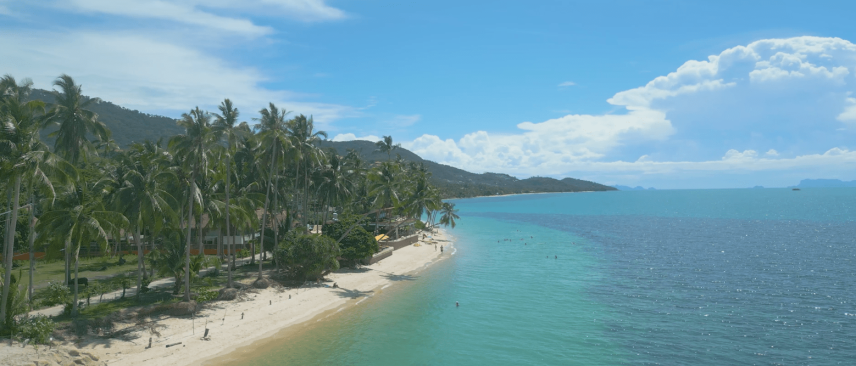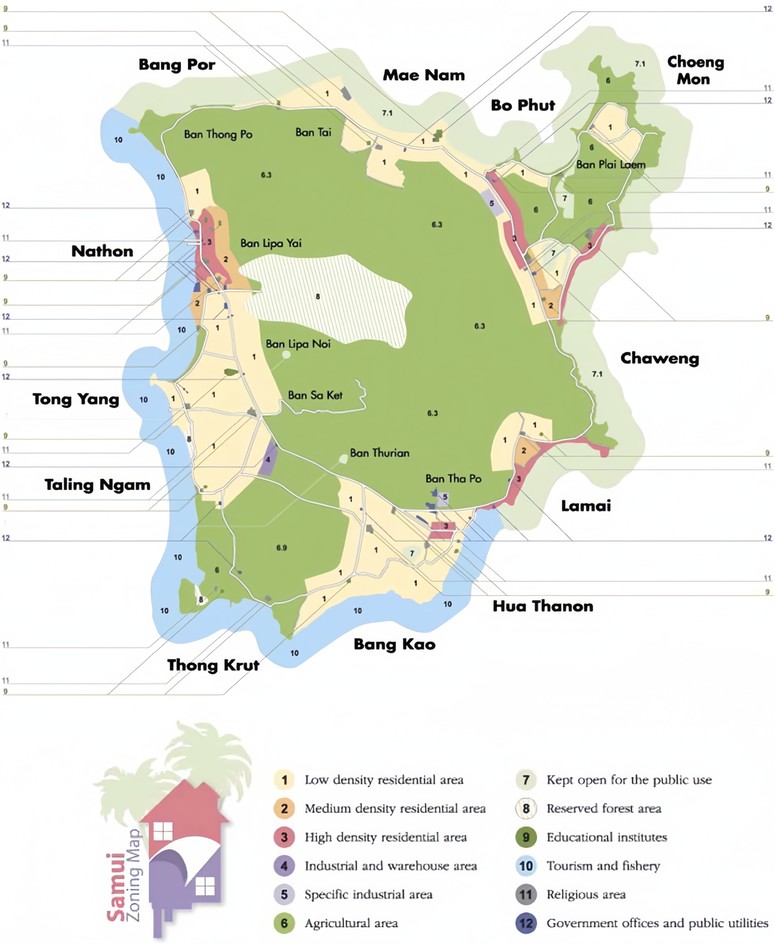
As a real estate expert on Samui Island, I, Anna Miroshina, want to highlight some essential regulations governing construction on the island. Koh Samui, like many parts of Thailand, has strict building and land use rules designed to protect its natural beauty and promote sustainability. These regulations are laid out in the Building Control Act B.E. 2522 (1979) and the Town and City Planning Act B.E. 2518 (1975).
Key Regulations for Beachfront Construction

Koh Samui’s unique geography, featuring both flat beach areas and steep mountainous land, has specific rules on how close structures can be built to the shoreline. These regulations aim to preserve the island’s environment while allowing for controlled development:
- Within 10 meters of the beach: Construction is prohibited.
- 10 to 50 meters from the beach: You may build a one-story structure up to 6 meters in height, with a total built area not exceeding 75 sqm.
- 50 to 200 meters from the beach: Construction up to 12 meters high is allowed, with a maximum built area of 2,000 sqm.
- Beyond 200 meters from the beach: Buildings can be up to 12 meters in height, with no restrictions on total built area.
These beach proximity regulations fall under the Building Control Act, which details restrictions based on the distance from the ocean.
Check out our collection of Koh Samui Beachfront Villas for Sale if you are looking to invest for a beachfront property.
Altitude and Slope Restrictions
In addition to distance from the beach, Samui’s terrain introduces other considerations. The Town and City Planning Act designates specific zones for land use based on environmental factors, including the altitude and slope of the land:

- Below 80 meters above sea level: No additional rules apply for private homes.
- 80 to 140 meters above sea level: A minimum of 400 sqm of land is required, 50% of which must remain unbuilt. The maximum height of buildings is capped at 6 meters.
- Above 140 meters: The building footprint must not exceed 90 sqm, with the same restrictions on land use and building height.
If your land is on a slope, additional rules apply:
- Slopes under 35 degrees: No extra restrictions beyond those already mentioned.
- 35 to 50 degrees: Only single-family homes are allowed, and the building footprint cannot exceed 80 sqm. Seventy-five percent of the land must remain unbuilt, with native trees planted to stabilize the soil.
- More than 50 degrees: Construction is prohibited.
Design and Sustainability Regulations
Beyond positioning and slope considerations, Koh Samui also has design guidelines to ensure sustainable development. Buildings must follow traditional Thai, tropical, or local aesthetics, with roofs covering at least 80% of the structure. These guidelines fall under a broader effort to ensure development remains environmentally friendly and in harmony with Samui’s landscape.
Legal Considerations and Environmental Protection
The Forest Act and Nature Reserve Act also govern some areas of construction, particularly those near protected lands or forest areas. These laws, alongside the building and city planning acts, ensure that Samui’s development remains sustainable, protecting the island’s future while allowing responsible growth.
For any construction or land development project, I always recommend working with experienced architects, legal experts, and engineers to ensure compliance with all local regulations.
